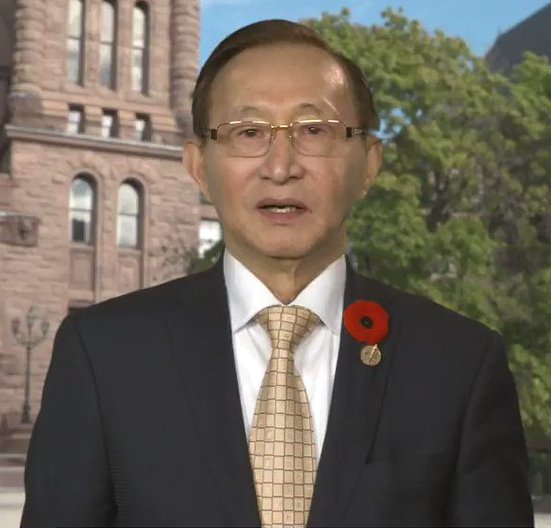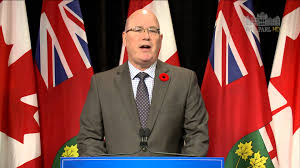Working with Municipalities to Build Ontario
Province announces new investments and tools for municipalities at 2023 AMO conference
The Voice of Canada — The Ontario government is working in partnership with municipalities to get shovels in the ground on priority projects and connect more people to jobs and homes, while enhancing critical public services to better serve the province’s growing population.
At the 2023 Association of Municipalities of Ontario (AMO) conference in London, Premier Ford announced that Ontario is introducing a new Building Faster Fund that will provide up to $1.2 billion over three years for municipalities that meet or exceed the housing targets they have pledged to achieve by 2031. This funding will help municipalities pay for housing-enabling infrastructure and related costs that support community growth. In recognition of their unique needs, 10 per cent of the funding will be reserved for small, northern and rural municipalities that have not been assigned a housing target, following municipal consultations.
Premier Ford also announced that Ontario will expand strong mayor powers to 21 additional municipalities, provided their heads of council commit to a municipal housing target as part of the province’s work to build at least 1.5 million homes by 2031. Strong mayor powers offer municipalities tools to help cut red tape and speed up the delivery of key shared municipal-provincial priorities such as housing, transit and infrastructure.
As part of the government’s work to support the construction of a range of housing types, Steve Clark, Minister of Municipal Affairs and Housing, announced that the province will be moving forward with a proposed definition of affordable housing for the purpose of development charge discounts and exemptions. This definition would take local incomes into account in determining which units should be eligible for development charge discounts and exemptions. This approach will reflect the ability of local households to pay for housing and recognizing the variety of housing markets across the province.
Minister Clark also announced that the province will be naming regional facilitators in Durham, Halton, Niagara, Simcoe County, Waterloo and York no later than September 11, 2023. The regional facilitators will make recommendations to the province on what locally-supported governance models would best support Ontario’s fastest growing municipalities in moving forward on shared priorities to help municipalities meet their housing targets and build housing-enabling infrastructure.
The government will also host a Housing Forum in Toronto in November 2023 to engage municipal partners and other key stakeholders on the province’s Housing Supply Action Plan and next steps in our work to tackle the housing supply crisis. As Ontario works towards that goal, the government continues to look to its partners for their advice on the implementation of our Housing Supply Action Plans and insights on potential opportunities to get more homes built.
“Municipalities are critical partners for our government and we’re absolutely committed to making sure they have the tools they need to succeed,” said Minister Clark. “We have made substantial progress in our work to get more homes built faster across Ontario and I look forward to working together to build the homes Ontarians need and deserve.”
The government is also taking an important step forward to deliver on Your Health: A Plan for Connected and Convenient Care by increasing provincial funding for public health agencies to build a robust public health sector that has the support and resources needed to connect people to care in their communities. Starting January 1, 2024, the province will restore provincial annual base funding for public health units to $47 million, which is the level previously provided under the 75 per cent provincial / 25 per cent municipal cost-share ratio and will provide local public health units an annual one per cent funding increase over the next three years so they can more effectively plan ahead and prepare.
The province will also clarify the roles of local public health units, to reduce overlap of services and focus resources on improving access to services close to home. One-time funding, resources and supports will be offered to local public health agencies that voluntarily merge to streamline and reinvest back into expanding programs and services.
To connect people to emergency care faster and increase the availability of paramedics and ambulances in communities, Ontario is increasing land ambulance funding to municipalities by an average of six per cent, bringing the province’s total investment this year to over $811 million. The province is also investing an additional $51 million into the Dedicated Offload Nurses Program over the next three years which helps reduce delays paramedics encounter dropping off patients at a hospital and allows them to get back out into the community faster. This investment will help 30 municipalities cover around 800,000 dedicated hours to support offloading ambulance patients in the emergency department.
“Building a stronger public health system, with more convenient and consistent access to public health services, is one more way our government is connecting people in Ontario to health care closer to home,” said Sylvia Jones, Deputy Premier and Minister of Health. “The pandemic showed that we need a stronger public health system and this increased funding will help to create a more connected public health system that will support Ontario communities for years to come.”
“Since day one, our government has listened to and worked closely with its municipal partners to build the critical infrastructure our growing communities need to thrive,” said Caroline Mulroney, Minister of Transportation. “From building new highways, to public transit, we are getting shovels in the ground on much-needed projects right across the province and supporting our shared goal of a stronger Ontario today and in the future.”
“For Ontario to succeed and serve the public well, all governments need to work together to address difficult challenges,” said Colin Best, AMO President and Councillor for the Town of Milton and Region of Halton. “We welcome the Ontario government’s support to build infrastructure, increase housing and to make housing more affordable for all.”
“This announcement is another tangible example of our government’s commitment to building Ontario,” said Nina Tangri, Associate Minister of Housing. “We know first-hand that municipalities across the province must be equal players in helping us achieve our goal of building 1.5 million homes by 2031. These new measures will help create more opportunities for municipalities and the province to work together, increase housing supply, and deliver for Ontarians.”
- Quick Facts
- The government’s fourth housing supply action plan – Helping Homebuyers, Protecting Tenants – contains a suite of new measures to make life easier for renters, help homebuyers and streamline policies to build more homes.
- Strong mayor powers are already available to 28 large and fast-growing municipalities that have committed to a housing target.
- Ontario is investing an additional $202 million annually through the Homelessness Prevention Program and Indigenous Supportive Housing Program – bringing the province’s annual investment in these programs to close to $700 million.
- The province is providing up to $50 million in temporary support to assist municipalities most significantly impacted by the federal decision not to make payments-in-lieu of taxes (PILT) on federal properties at the provincially regulated rate. Ontario continues to urge the federal government to make these payments and encourages the province’s municipal partners to join in this effort, as this is a federal responsibility.
- Ministers, Associate Ministers and Parliamentary Assistants held about 600 meetings with municipalities and municipal organizations from across Ontario at the 2023 AMO conference. They discussed key priorities including skilled trades, public health, housing and homelessness supports, and transportation infrastructure.








